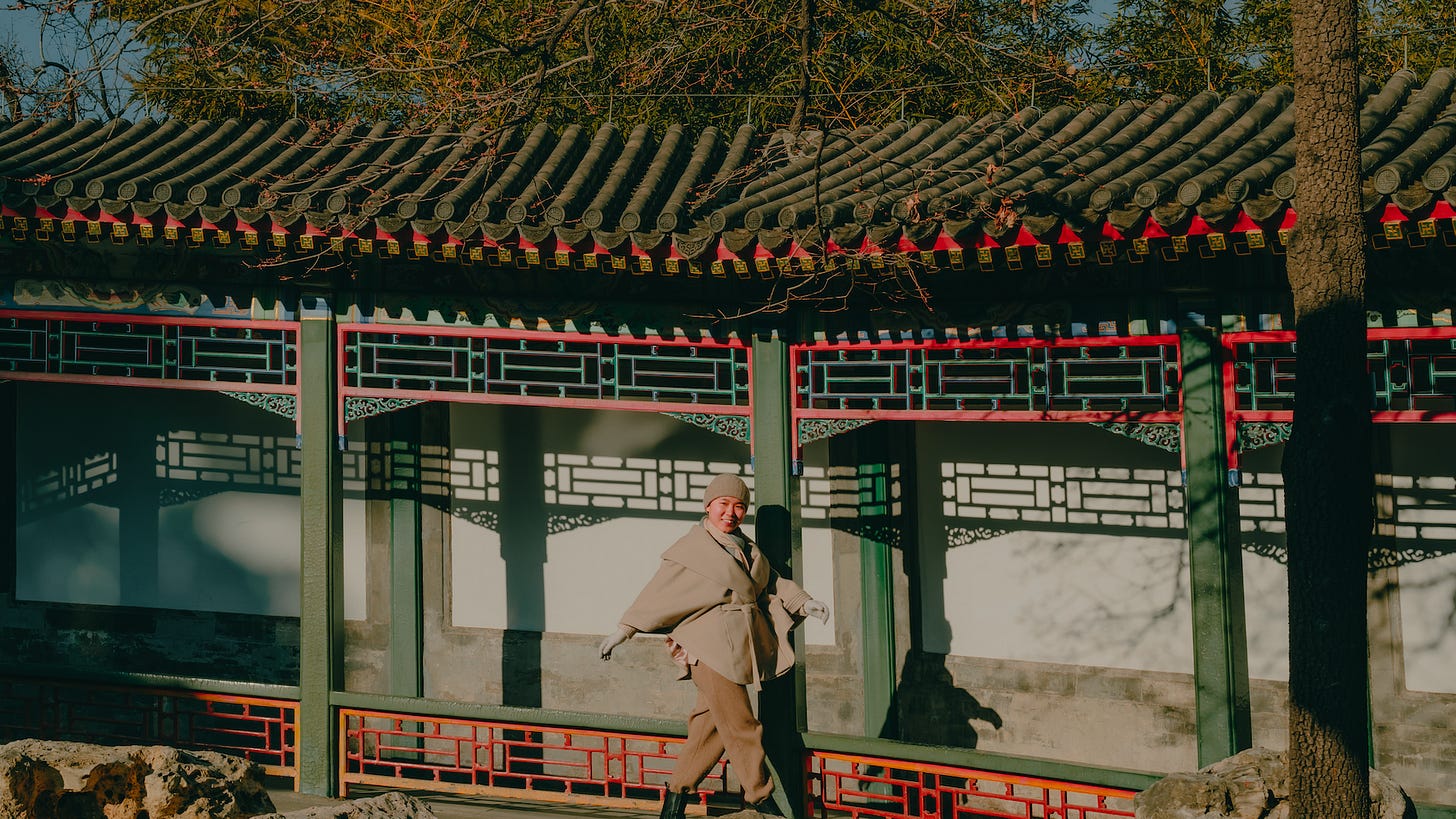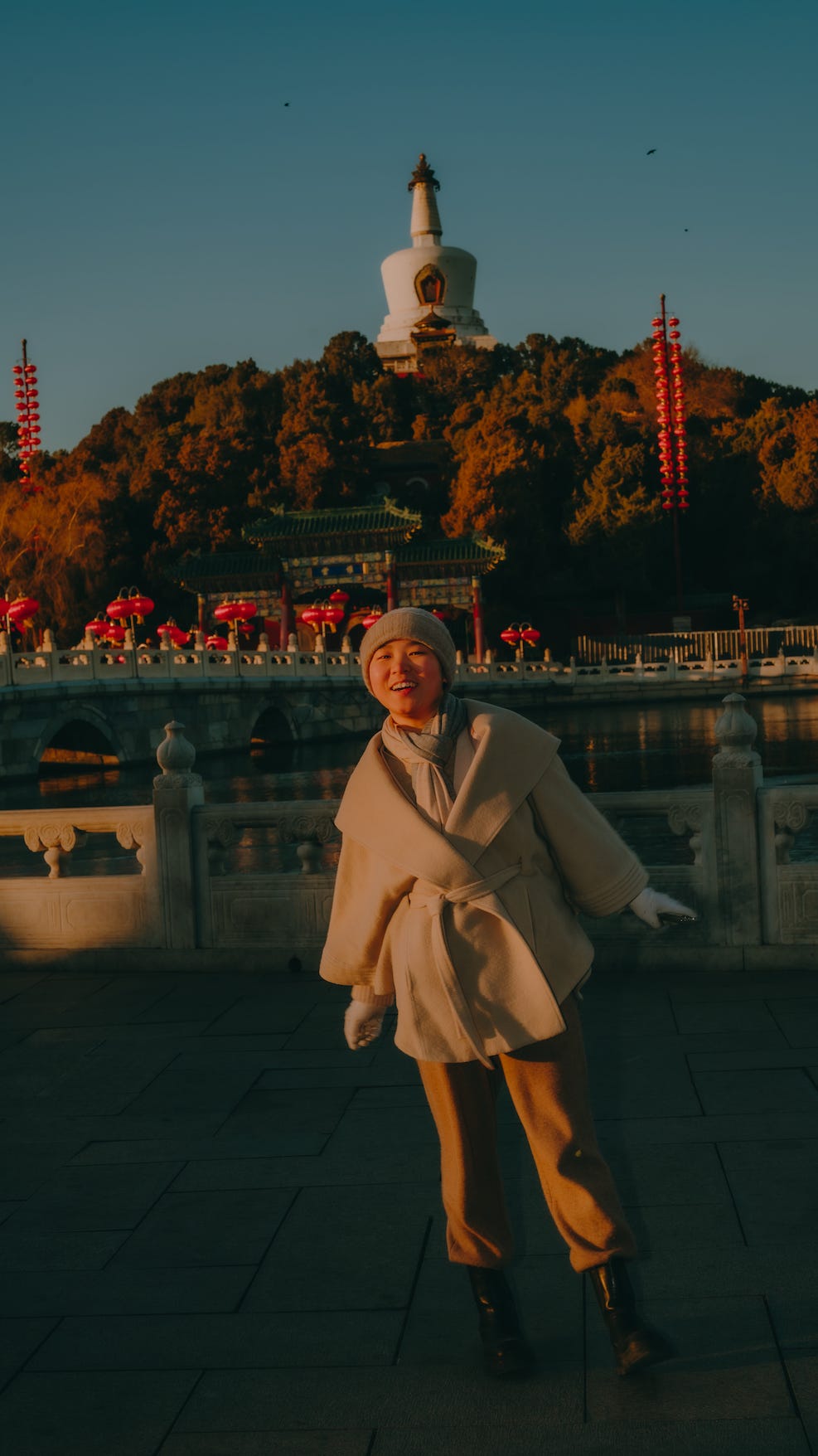Roamlogue | Beijing Beihai Park Travel Route Guide in 4 hours
Last Saturday, I went to Beihai Park on a rainy day. Who would have thought it would snow for 2 hours in the afternoon, but by then we had already left Beihai Park and were wandering toward the Financial Street Shopping Center. While walking, only occasional raindrops hit our shoulders. Eddy was worried that heavy rain would wet his cashmere sweater, disrupting his cashmere washing plans - he had originally planned to put away his thick winter cashmere sweaters and coats at the end of March, but didn't want to wash them early.
We arrived at 11:30 AM and had some disagreement about whether to exit from the North Beihai subway station's D exit or B exit. Since we had visited in winter once before, we wanted to try a different exit, but forgot which one we had used. After coming out, we realized it was the D exit we had used last time, and we even walked in the wrong direction without checking the map. I recommend using the B exit, which is indeed closer, but requires crossing a road.
Beihai and the Dianmen area used to be the location of royal mansions. There are still some buildings with princely mansion styles nearby, including the Archaeological Research Institute relocated from Small Western Heaven in Beihai Park, the Hong Kong Office in Beijing, and a foreclosed property of a Fujian tycoon...
Because we had a 100-yuan annual park pass that allows two entries to the same park, our first route was to enter through the north gate, exit through the southwest gate, cross the bridge, then enter through the south gate near Tuancheng, climb up to the White Pagoda on Qionghua Island via Yong'an Bridge, come down from another bridge connected to Qionghua Island, walk north, and finally circle back to exit from the north gate.
The experience of walking around revealed that Beihai Park's main attractions are the Buddhist pavilions near the north gate and the ancient temples and towers on Qionghua Island. Note that Yong'an Temple (No.5), Yilan Hall, and Tuancheng (No.1) near the south gate require additional tickets, so we didn't enter those.
For our second tour of Beihai Park, we followed the route shown in the map below. The 7-minute vlog tour video was also filmed according to this route.
I think the most beautiful scenery in Beihai Park is the Five Dragon Pavilion, Nine Dragon Screen, and the Big Western Heavene and Small Western Heaven building complex near the north gate. Viewing the White Pagoda is also best from these surrounding angles, rather than from the island itself, where the scenery feels somewhat ordinary.
The image below shows the island view captured while walking from Xiaoxi Temple toward the southwest gate. The bridge in the picture is the southern Yong'an Bridge.
Jingxin Study is very beautiful, with Taihu rocks, pavilions, corridors, arched bridges, and pools creating an interesting harmony. The best spot for photography is the corridor shown below, shooting toward the opposite side.
The small building next to Jingxin Study looks somewhat like the former residence of Cao Xueqin in the China National Botanical Garden Travel Guide
Not far from here is the Huazang Memorial Archway. Entering from here leads to the Western Paradise. Many people take photos here as well.
Walking to the left from here will take you to the Nine Dragon Screen, while going straight ahead leads to the Treasure Hall made of Nanmu wood.
Coming down a slope from the Nine Dragon Screen, you can see the Five Dragon Pavilion. Beihai Park's most famous spring flower-viewing spot is the Chanfu Temple, which faces the central Longze Pavilion of the Five Dragon Pavilion.
All five pavilions are symmetrically designed. The central and largest one, Longze Pavilion, has a dragon on the ceiling when you look up, though this dragon looks more like a catfish.
Taking photos on the bridges connecting the Five Dragon Pavilions also produces great shots. You can also photograph the White Pagoda on Qionghua Island from here.
Standing on the Xiaoxi Temple side, you can capture both the Longze Pavilion and the CBD buildings of Chaoyang District. On nice days, many people dress in Qing Dynasty princess costumes and take photos at the Five Dragon Pavilion.
To photograph the White Pagoda head-on, you need to go to Yong'an Bridge on the south side (No.4 on the tour route map). The White Pagoda faces south. The Yuegu Tower (No.9) on Qionghua Island is accessible, and it's very quiet inside with walls displaying ancient stone inscription calligraphy.
We arrived at 11:30 and left at 3:30 PM. We brought some food to eat in the pavilion of Huafang Study. It's suitable for a leisurely 3-4 hour tour. This guide doesn't include boat rides. I think the best park for boat rides is the Summer Palace, which I'll cover in the next post.
Here is a video clip of this Beihai Park tour I've published on Youtube. Because it was a rainy early spring day, the visual style is somewhat damp and gloomy. Combined with this written route description, you should have some ideas for touring Beihai Park.
pamperherself

















